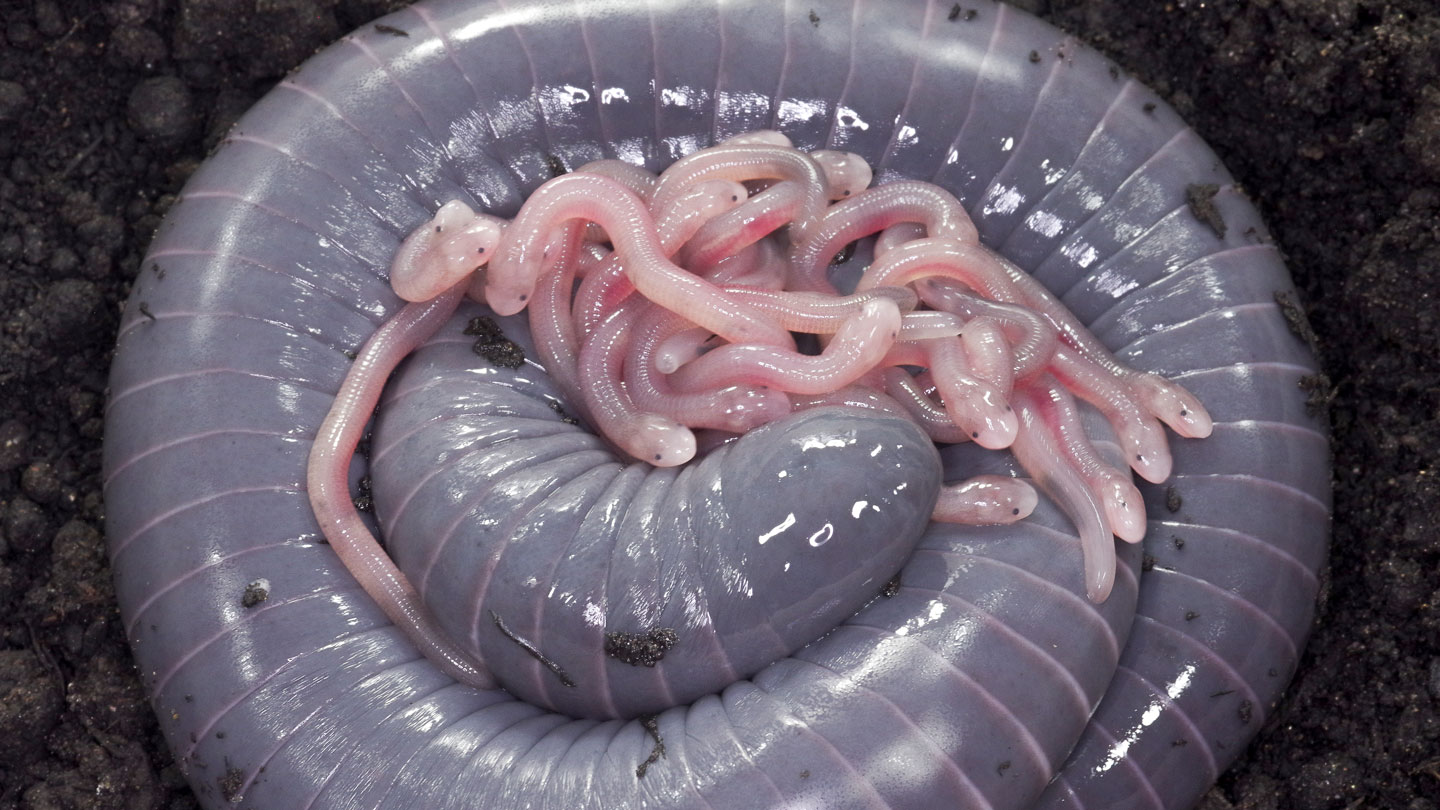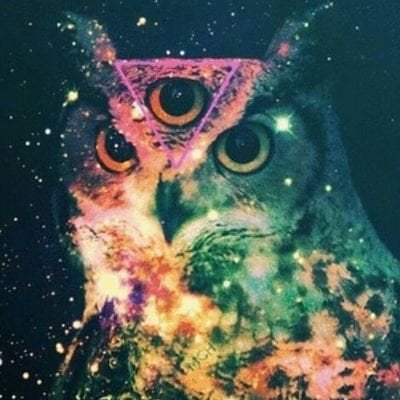An interesting case of convergent evolution. I wanna know what this fluid looks like.
The authors of the paper uploaded 6 videos in the supporting info. It looks like mucus to me, but it is difficult to see. I cropped one video in which you can see strings of the “milk”: https://i.imgur.com/9RvVSgz.mp4
You can get the zip file with the 6 videos here: https://www.science.org/doi/suppl/10.1126/science.adi5379/suppl_file/science.adi5379_movies_s1_to_s6.zip
I also found a video of a frog feeding its tadpoles through the skin: https://static-content.springer.com/esm/art%3A10.1007%2Fs10682-023-10259-z/MediaObjects/10682_2023_10259_MOESM2_ESM.mp4
The frog video comes from this paper: https://link.springer.com/article/10.1007/s10682-023-10259-z
Heh I got a warning it may contain erotic or sexual imagery from imgur.
…Oh 😅 Yeah I think I can see why now
Wow, thank you very much!
You are welcome!
I also have a snippet from one of the videos that shows in more detail how the fluid is excreted. I will hide it under a spoiler tag to make sure people are warned of the content before clicking the link, because I think these images might be uncomfortable to watch for some people.
spoiler
Here’s the video in which you can see the mom excreting a thick fluid through her cloaca: https://i.imgur.com/sB22z5G.mp4
This snippet comes from the video 5 from the supporting information.
And how it tastes.
You make me wanna vomit but i am afraid you’d wanna know how it taste so i am gonna hold on to it for now.
Keeping the flavour all for yourself eh?
Get your own
(☞゚ヮ゚)☞
deleted by creator
Slimy, yet satisfying.
Hakuna matata!
So, like milk?
So Argonians having boobs did make sense after all…
These ones make the milk from their reproductive tract so still no boobs 😞
Cum for babies???
deleted by creator
I’m.
Terrified.
What is a species? What is a genus or a taxa? It seems like the lines become more blurry the closer you look at it.
Someone finds an organism and considers it to be “different enough” from all other organisms that have been described in the literature. This person will collect (or, in the past, sometimes illustrate) the organism and store it somewhere such as in a museum - this is the “holotype”. The person will then write a paper with the description of the organism, compare it to some of the most similar known members, and make an argument for calling this holotype a member of a new species. If the species has particularly unique traits, or substantially different genetics, the author can argue for the description of a new genus - or even a higher rank.
But… The line is indeed extremely blurry. There is no universal agreement about where to draw the lines. The description of a new taxon is an argument, and experts disagree continuously. The tree is being continuously shuffled and it is not uncommon to see different publications using different scientific names for the same species.
and if we get a fixed rate for genetic diference?, if it’s X different, so it’s other specie
When creating a set of rules to categorize living things we get to decide how rigid we want the rules to be. The more rigid the rules, the easier it is to draw lines. The more flexible they are, the greater the room for ambiguity.
Taxonomy would be much simpler if we could create a rigid rules. But evolution is a rather chaotic process, and living things are very diverse. Nature is very flexible. Rigid rules won’t let us categorize this diversity in meaningful ways.
For example, if we want to set a “fixed rate for genetic difference”, we will run into a problem that different species have different genetics. It could be that you find that the genetic difference between a human and a banana is less than the difference between two fungi species that we consider to be in the same genus. So, seeing this, you have to either group humans and bananas together, split the fungi into many tiny groups, or lift this global “genetic difference” constraint and focus instead in making more local comparisons.
The last option is what taxonomists usually do. There are several regions in the genome that are used that are used as “barcodes” and are also used to establish the “distance” between organisms in evolutionary terms. These are very useful for building a case for a new species. But it is only part of the argument, and we can’t define an absolute reliable number that always works. Here is a review that covers the topic of DNA barcoding and species delineation that you may look into if you want more detailed information: https://hal.science/hal-01958691/file/dna-barcoding-species-delineation-and-taxonomy-a-historical-perspective.pdf
wow, thanks for the explanation! the banana and human example was very clever, thanks for the link too!
They do, in many cases the choice to assign two populations to different species rather than one is not clearcut. All sorts of weird stuff can happen, like ring species around lone mountains :
https://en.m.wikipedia.org/wiki/Ring_species
Within that species there are populations that cannot interbreed, yet there’s still gene flow between them.
Humans like putting things into neat little boxes. Nature is under no obligation to oblige.
In bacteria iirc these concepts still exist - mostly - though there is definitely a Ship of Theseus argument that could be made there.
For viruses though, woah! Literal chimeras exist with like the head from one source, the body from another, and perhaps the tail from still another. After all, why not? They are just functional nanoparticles, and on an evolutionary timescale of billions of years, pretty much anything that can be done will have been tried, multiple times.
These concepts are still practically useful though - well, as much as any concept is, given how the entire field of biology exists in a more or less fluid state. Literally the only law there is Virchow’s stating that all cells come from previously-existing cells (by division), and that one even entirely on its face has to be false b/c what about “the first cell”?
Likewise the central dogma that information flows from DNA through RNA to protein has been proven false so many times it is ridiculous. Nowadays we know that it sometimes goes backwards, or skips steps, or both - e.g. proteins straight-up manufacture DNA from scratch (telomerases), or like proteins can make other proteins (not just prion conversion!).
Biology is… weird. It is definitely not just physics, or even chemistry, enacted on a larger scale - it’s on a WHOLE. NOTHER. LEVEL!:-P
Herpetologist Carlos Jared of the Instituto Butantan in São Paulo and his colleagues have been studying these eccentric animals for years. In previous studies, the team noticed that ringed caecilian hatchlings, which live their first two months out of the egg in their mother’s care, spent much of their time around the end of her body near the shared opening of the reproductive, digestive and urinary systems — an anatomical part called the vent. The female would periodically expel a thick fluid from the vent, which the young would enthusiastically feed on.
Something I didn’t quite understand after watching the video is in what way the “milk” is expelled or distributed, because maybe it’s because of the camera’s perspective but from what I saw in the video the babies stayed on top of the tail, not underneath, where I guess the vent is located. Could someone explain if I have misunderstood something?
In one of the videos this is clear. Some people might feel uncomfortable watching this video, so I will place a link to it under a spoiler tag just in case.
spoiler
Here’s the video in which you can see the mom excreting a thick fluid through her cloaca: https://i.imgur.com/sB22z5G.mp4
I am grateful this isn’t the way mammals ended up feeding their offspring.
Aaw they’re cute, the babies have little eyes!
looks at picture
Please kill it before there are more of them
/s just in case
Thanks to everyone who answered, I learned to never trust Google even when making a direct search, and people are helpful and willing to explain.
What about the platypus?
Amphibian and semi-aquatic aren’t the same thing. Frogs are amphibians because they start as gilled tadpoles and turn into hoppy lungy frogs. Turtles are not amphibians because they hatch as a turtle, live as a turtle, and die as a turtle. It’s turtles all the way down.
What about the platypus?
Platypus babies only drink Bundaberg Ginger Beer. Also, they’re not amphibians.
Platypi are mammals
Platypussies is the plural.
Platypotti
Platipy, like echidnas, are monotremes; “primitive”, egg-laying mammals.
Caecilians are amphibians, like frogs and salamanders. Whole different clade.
the creature
Milk from it’s ‘reproductive tract’? So like vag milk?
Vaginal mucus, if it’s good enough for me to eat then why not.
deleted by creator
Leave some for the baby.
You brought this on yourself.










